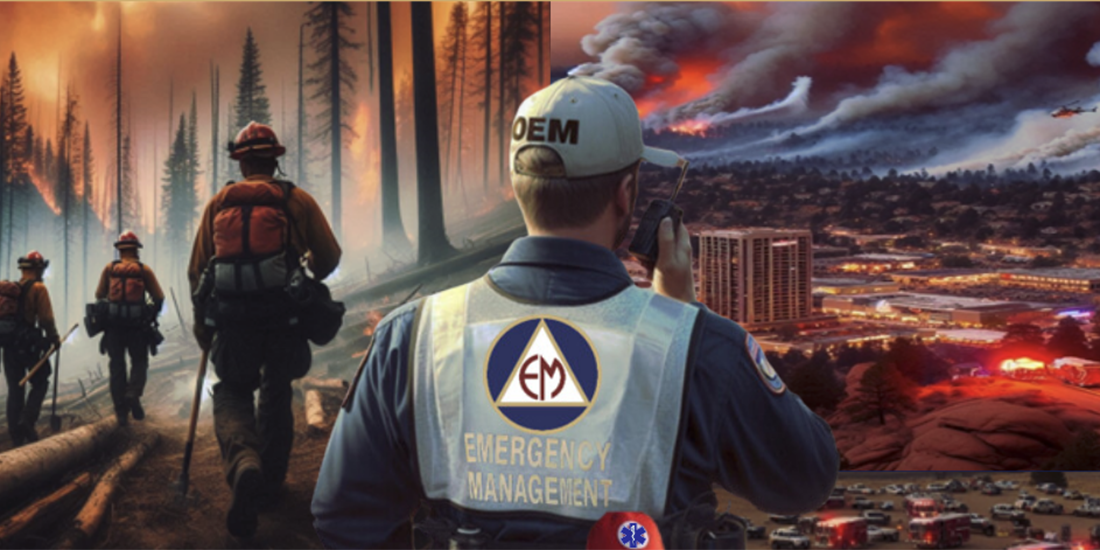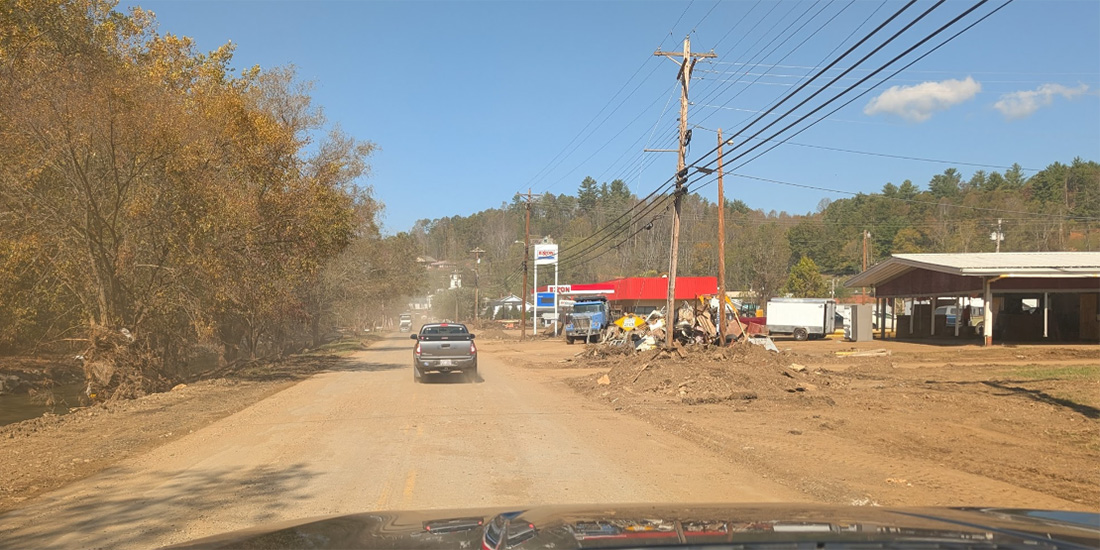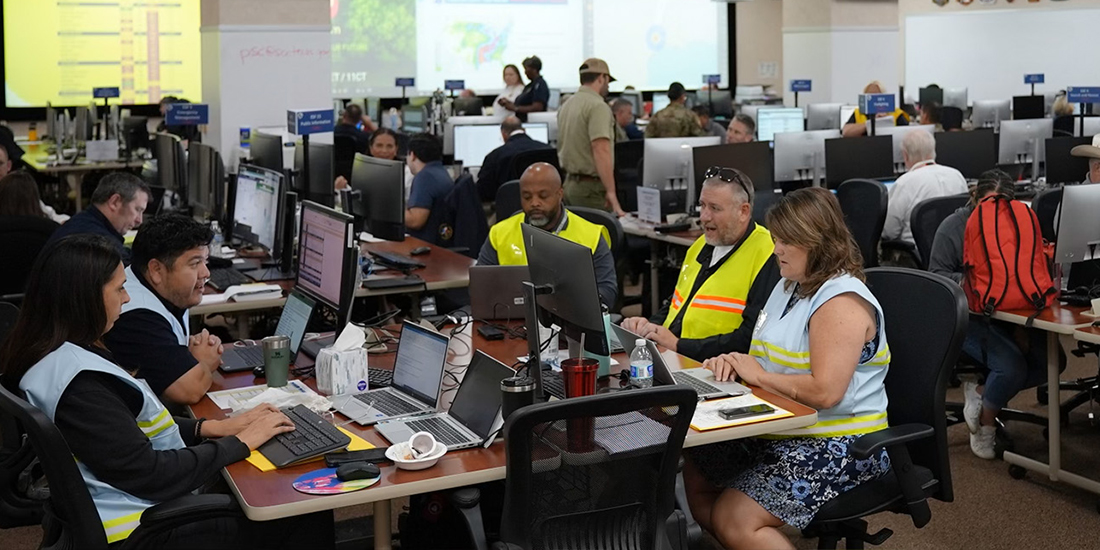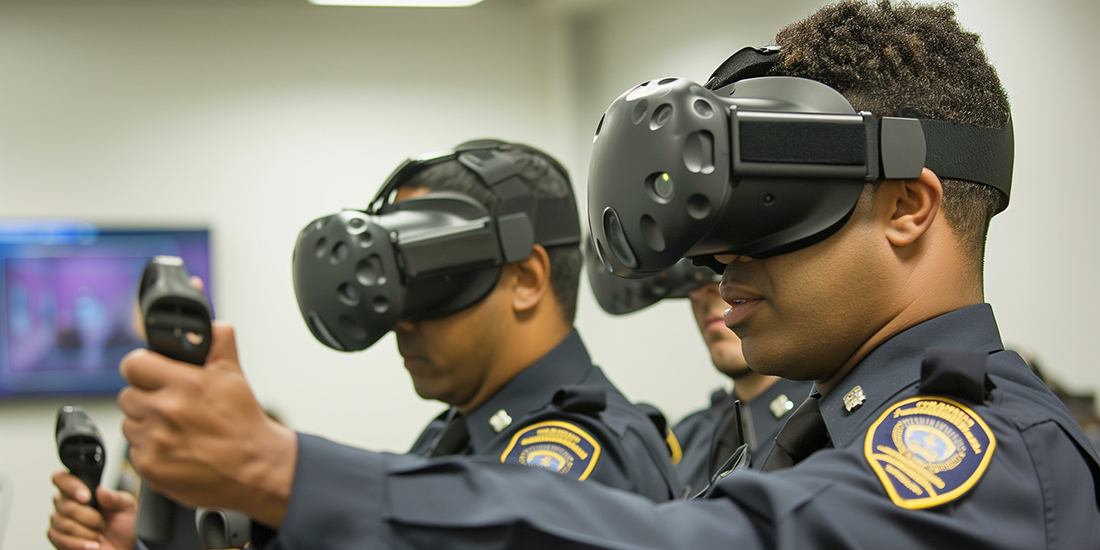Most recently published

In Memoriam: Lynda Zambrano
Domestic Preparedness
February 26, 2025
Advisor Lynda Zambrano’s legacy is far-reaching, and the Domestic Preparedness community will miss her and her contributions deeply.

Advisory Board Spotlight: Interview with Sadie Martinez
Sadie Martinez
February 19, 2025
Sadie Martinez is on the advisory board for the Domestic Preparedness Journal. Sadie is the Colorado State Division of Homeland Security and Emergency Management’s Access and Functional Needs Coordinator. Sadie uses the Communication, Maintaining Health/Medical, Independence, Support Services and Safety, and Transportation (CMIST) resource framework, which provides a whole-community inclusion

Elevating Healthcare Emergency Preparedness Exercises with Realistic Patient Simulation
Kathryn Romanchuk and Ben Kobliner
February 19, 2025
Overlooked until disaster strikes, many emergency management departments struggle with personnel and budgetary constraints, yet the demand placed on these departments continues to increase. Nevertheless, hospitals and health systems need to be prepared, and full-scale exercises are a comprehensive method for achieving this preparedness.

Back to the Basics: Navigating Crisis Leadership
Andrew Pence
February 19, 2025
From historic catastrophes to today’s challenges, crises pose significant public threats. By returning to the basics and prioritizing deliberate preparation, organizational leaders can build greater resilience, enhance performance, and lead effectively when it matters most.

Imagining the U.S. Without Power: A Dual-World EMP Exercise
Charles (Chuck) L. Manto, K. Luke Reiner and Dave Hunt
February 12, 2025
A dual-world tabletop exercise simulating an electromagnetic pulse event in Chicopee, Massachusetts, revealed startling discrepancies in outcomes between the city’s current preparedness and a moderate-preparedness simulation.

The Forefront of Innovation in Training & Exercises: Disaster Gaming
Arthur J. Simental
February 12, 2025
Disaster wargaming may significantly change the future of tabletop exercises in emergency management and homeland security. Long used effectively to win and prevent wars throughout history, wargaming offers more realistic and engaging scenarios for emergency managers to prepare for real-world disasters.

U.S. Withdrawal from the World Health Organization: Emergency Preparedness Implications
Tanya M. Scherr
February 12, 2025
As the U.S. contemplates withdrawing its membership from the World Health Organization, there are potential impacts on both local and global emergency preparedness and response to consider. Emergency managers should evaluate their current programs to determine ramifications in their local sectors.

The Vulnerability of Public Figures: Lessons from UnitedHealthcare
Kole (KC) Campbell
February 5, 2025
High-profile business leaders like UnitedHealthcare’s murdered CEO have been at an elevated risk of targeted violence in the past several years. Although such attacks on corporate executives and other public figures are rare, they are targeted. In response, many corporations have increased personal protection for executives, but the permanence of

Keeping Humans in the Loop: The Future of Emergency Management
Justin Kates and Emily Martuscello
February 5, 2025
The emergence of powerful artificial intelligence tools generates excitement and apprehension, raising profound questions about the future of emergency response. By adopting the joint cognitive systems paradigm, emergency managers are offered a new way of thinking about their work in this environment.

Overcoming Communications Challenges: A Hurricane Helene Success
Jarod Rosson
January 29, 2025
As part of the Texas Division of Emergency Management’s Hurricane Helene Incident Support Task Force, Emergency Management Coordinator Jarod Rosson experienced firsthand what it is like to respond to a disaster when all ground-based forms of communication are offline.

Editor’s Note: Responding to Disasters in 2025 and Beyond
Catherine L. Feinman
January 29, 2025
The December 2024 edition of the Domestic Preparedness Journal provides insight into the intersection of AI and emergency preparedness. With their exponentially increasing speed of development, existing, emerging, and not-yet-created technologies must all be part of the planning process in 2025 and beyond.

All at Once: Multi-Incident Simultaneous Response and Recovery
Tucker Berry
January 29, 2025
As demonstrated by hurricanes Helene and Milton, jurisdictions unaccustomed to compounding incidents can bolster their readiness to simultaneously respond and recover by proactively examining and preparing for unique challenges posed by such a scenario.

Elevating Law Enforcement Training Standards
Richard Schoeberl and Anthony (Tony) Mottola
February 26, 2025
Training standards ensure that all law enforcement officers receive a consistent level of knowledge and skills to perform their jobs safely and effectively. One training model incorporates “pracademic” professionals and garners trust from practitioners as well as academics. Its integration of theory and practice sets a training standard that can

In Memoriam: Lynda Zambrano
Domestic Preparedness
February 26, 2025
Advisor Lynda Zambrano’s legacy is far-reaching, and the Domestic Preparedness community will miss her and her contributions deeply.

Advisory Board Spotlight: Interview with Sadie Martinez
Sadie Martinez
February 19, 2025
Sadie Martinez is on the advisory board for the Domestic Preparedness Journal. Sadie is the Colorado State Division of Homeland Security and Emergency Management’s Access and Functional Needs Coordinator. Sadie uses the Communication, Maintaining Health/Medical, Independence, Support Services and Safety, and Transportation (CMIST) resource framework, which provides a whole-community inclusion

Elevating Healthcare Emergency Preparedness Exercises with Realistic Patient Simulation
Kathryn Romanchuk and Ben Kobliner
February 19, 2025
Overlooked until disaster strikes, many emergency management departments struggle with personnel and budgetary constraints, yet the demand placed on these departments continues to increase. Nevertheless, hospitals and health systems need to be prepared, and full-scale exercises are a comprehensive method for achieving this preparedness.

Back to the Basics: Navigating Crisis Leadership
Andrew Pence
February 19, 2025
From historic catastrophes to today’s challenges, crises pose significant public threats. By returning to the basics and prioritizing deliberate preparation, organizational leaders can build greater resilience, enhance performance, and lead effectively when it matters most.

Imagining the U.S. Without Power: A Dual-World EMP Exercise
Charles (Chuck) L. Manto, K. Luke Reiner and Dave Hunt
February 12, 2025
A dual-world tabletop exercise simulating an electromagnetic pulse event in Chicopee, Massachusetts, revealed startling discrepancies in outcomes between the city’s current preparedness and a moderate-preparedness simulation.

The Forefront of Innovation in Training & Exercises: Disaster Gaming
Arthur J. Simental
February 12, 2025
Disaster wargaming may significantly change the future of tabletop exercises in emergency management and homeland security. Long used effectively to win and prevent wars throughout history, wargaming offers more realistic and engaging scenarios for emergency managers to prepare for real-world disasters.

U.S. Withdrawal from the World Health Organization: Emergency Preparedness Implications
Tanya M. Scherr
February 12, 2025
As the U.S. contemplates withdrawing its membership from the World Health Organization, there are potential impacts on both local and global emergency preparedness and response to consider. Emergency managers should evaluate their current programs to determine ramifications in their local sectors.

The Vulnerability of Public Figures: Lessons from UnitedHealthcare
Kole (KC) Campbell
February 5, 2025
High-profile business leaders like UnitedHealthcare’s murdered CEO have been at an elevated risk of targeted violence in the past several years. Although such attacks on corporate executives and other public figures are rare, they are targeted. In response, many corporations have increased personal protection for executives, but the permanence of

Keeping Humans in the Loop: The Future of Emergency Management
Justin Kates and Emily Martuscello
February 5, 2025
The emergence of powerful artificial intelligence tools generates excitement and apprehension, raising profound questions about the future of emergency response. By adopting the joint cognitive systems paradigm, emergency managers are offered a new way of thinking about their work in this environment.

Overcoming Communications Challenges: A Hurricane Helene Success
Jarod Rosson
January 29, 2025
As part of the Texas Division of Emergency Management’s Hurricane Helene Incident Support Task Force, Emergency Management Coordinator Jarod Rosson experienced firsthand what it is like to respond to a disaster when all ground-based forms of communication are offline.

Editor’s Note: Responding to Disasters in 2025 and Beyond
Catherine L. Feinman
January 29, 2025
The December 2024 edition of the Domestic Preparedness Journal provides insight into the intersection of AI and emergency preparedness. With their exponentially increasing speed of development, existing, emerging, and not-yet-created technologies must all be part of the planning process in 2025 and beyond.
The Current State of the Opioid Crisis & Other Emerging Threats
John Johnson
January 22, 2025
Opioid deaths have surged dramatically since the pandemic. Manufacturers exploit legal loopholes and use precursor chemicals that often evade detection and regulation. These new and growing threats present challenges to public safety that demand innovative solutions and a proactive approach.
Advisory Board Spotlight: Interview with Major Rhonda Lawson
Major Rhonda Lawson
January 22, 2025
Rhonda Lawson is a major in the chief’s office of the Texas Highway Patrol (THP) Division. She began her 27-year career with the Texas Department of Public Safety in 1997 as a trooper. In 2012, Lawson transferred to the Texas Division of Emergency Management as captain and deputy Operations Section
Preparing for the Next Biothreat: Lessons Not to Forget
Christy Anderson
January 15, 2025
In 2024, senior officials from hospitals, healthcare organizations, public health, emergency management, and other responder communities convened at two workshops to share the lessons they learned as leaders during the COVID-19 pandemic. Their lessons learned can help communities better prepare for the next biothreat.
Mission Ready Packages: New Possibilities
Kay C. Goss
January 15, 2025
In 2005, the Superdome in New Orleans served as a mass shelter and accommodated over 25,000 people during Hurricane Katrina. Those accommodations, though, were inadequate, with limited power, plumbing, and other resources. To avoid a similar scenario, the Mission Ready Venue Initiative enables stadiums to be a resource for immediate
Evolution of a Critical Emergency Response Tool
Jamie Hannan and Kristina Clark
January 8, 2025
During a derecho in May 2024, Texas agencies contacted and conducted wellness checks on residents with disabilities or with functional and access needs. One tool facilitated the process, sharing critical information about registrants to the emergency responders and planners who needed to know.
Why Public Works Needs a Seat at the Planning Table
Greg Hoffnung
January 8, 2025
Despite their critical role in disaster response, public works agencies are not always included in the emergency planning process. To bridge planning gaps, public works should be integrated into emergency response efforts. Key steps can help ensure that these and other agencies can more effectively respond to the next disaster.
A Data-Driven Approach to Police Recruitment and Retention
Glenn Fueston and Michael Breslin
December 26, 2024
From the rise of advanced criminal networks and borderless crimes to the persistent hurdles of limited resources, inadequate training, and outdated tools, law enforcement departments navigate an increasingly demanding landscape. Big data and artificial intelligence can help build and maintain this critical public safety workforce.
The Role of AI in Meeting a Great Emergency Management Challenge
Douglas Yeung and Aaron Clark-Ginsberg
December 26, 2024
AI’s ability to ingest and synthesize data on hazards and vulnerabilities could prove invaluable in addressing one of the biggest long-standing challenges of emergency management: truly engaging the whole community.
Editor’s Note: Preparing for the Future of Artificial Intelligence
Catherine L. Feinman
December 25, 2024
The December 2024 edition of the Domestic Preparedness Journal provides insight into the intersection of AI and emergency preparedness. With their exponentially increasing speed of development, existing, emerging, and not-yet-created technologies must all be part of the planning process in 2025 and beyond.
Introducing AI to the Emergency Management Workforce: A Case Study
Lenora G. Borchardt
December 18, 2024
AI can contribute to professional competency and learners’ success while efficiently training emergency management professionals and managing the bottom line.
Opportunities for Artificial Intelligence in Emergency Management
Alex Hagen and Jonathan (Jon) Barr
December 18, 2024
Recent research into the relationship between AI and emergency management uncovered an environment prepared for AI-based solutions. While AI must overcome some infrastructure hurdles, technologies to prevent, mitigate, and recover from emergencies are on the horizon.
Emergency Management of Tomorrow: Emerging Technologies and Concepts
Dan Cotter, Christina Bapst-Stump, Ann Lesperance and Rachel A. Bartholomew
December 11, 2024
More frequent and intense disasters put pressure on emergency managers and emergency operations centers to share and analyze data faster than ever before and with more reliability and defensibility. The future of emergency management is changing fast—and so is the science and technology to protect it.
Follow Us
Get Instant Access
Subscribe today to Domestic Preparedness and get real-world insights for safer communities.


